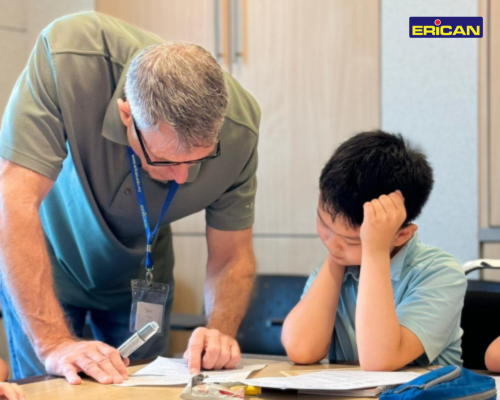By Ms. Jecinta
Teaching English as a Second Language (ESL) presents unique challenges, especially when dealing with diverse student needs and varying proficiency levels. In any ESL classroom, some students may excel in certain areas like speaking, while others struggle with writing or grammar. To ensure success for all students, teachers must adopt flexible teaching strategies that address these diverse needs.
This article explores some common challenges ESL teachers face and offers strategies for overcoming them, such as differentiated instruction, technology integration, and fostering a student-centered learning environment.
1. Addressing Diverse Learning Paces

One of the biggest challenges in an ESL classroom is handling students with different learning speeds. While some students may quickly grasp new vocabulary or speaking skills, others might find grammar or writing more difficult.
To address this, teachers can implement differentiated instruction, tailoring lessons to meet each student’s needs. This can involve creating varied activities that cater to different learning styles, such as group projects for collaborative learners, one-on-one sessions for those needing extra grammar help, or creative assignments for students who prefer visual learning.
2.Providing Personalized Support

Personalized support is essential in helping students overcome their individual challenges. By offering targeted feedback and additional assistance where necessary, teachers can help each student develop the skills they need to improve in weaker areas. For example, if a student struggles with writing, the teacher might assign specific writing exercises or offer regular writing practice sessions.
This personalized approach allows students to focus on their growth, which helps build their confidence and encourages them to stay engaged in the learning process.
3.Maintaining Student Motivation

Keeping students motivated is another significant hurdle. Progress in language learning can sometimes feel slow, which can lead to frustration or disengagement. To keep students motivated, it’s important to incorporate interactive activities like role-plays, games, and group discussions that make learning fun and relevant.
Additionally, celebrating small victories—such as mastering new vocabulary or successfully using a new grammar structure—can boost student morale. Regular constructive feedback also helps keep students on track by reminding them of their achievements and areas for improvement.
4. Utilizing Technology in the Classroom

The integration of technology can be a game-changer in the ESL classroom. Digital tools, online platforms, and mobile apps provide interactive and engaging ways for students to learn at their own pace. Language learning apps like Duolingo or Memrise offer fun, gamified experiences, while video lessons and online quizzes can reinforce classwork and help students practice outside of the classroom.
Teachers can also make use of virtual classrooms or digital collaboration tools, allowing for ongoing practice and engagement even beyond the traditional classroom setting.
5.Fostering Critical Thinking

One of the most important goals of language learning is to develop students’ critical thinking skills. Rather than simply memorizing vocabulary or grammar rules, students should be encouraged to engage with the language in meaningful ways. Teachers can implement problem-solving activities, case studies, or project-based learning tasks to promote deeper understanding.
For example, students might analyze articles, debate topics, or create presentations based on real-world situations. This not only helps them improve their language skills but also develops their ability to think critically and solve problems.
6.Building Confidence Through Peer Learning

Peer learning plays a crucial role in building student confidence. Group projects, pair work, and discussions allow students to experiment with language in a supportive, low-pressure environment. This fosters a sense of community in the classroom, making it easier for students to practice and learn together.
Collaborative learning also encourages students to learn from one another, providing opportunities for them to practice speaking and listening skills while building rapport with their classmates.
7.Creating an Inclusive Classroom Environment

A student-centered classroom is one where every learner feels safe, supported, and included. Establishing a positive classroom atmosphere is essential for overcoming barriers like language anxiety or the fear of making mistakes. Teachers should encourage open communication and mutual respect, fostering an environment where students feel comfortable expressing themselves.
When students feel safe, they are more likely to take risks with their language learning and grow from their mistakes, which ultimately accelerates their progress.
8.Applying Real-World Contexts to Learning

Another key to keeping students engaged is showing them how language learning can be applied to real-life situations. Teachers can create real-world scenarios in the classroom, such as role-playing restaurant interactions or conducting mock job interviews. These practical applications not only make learning more engaging but also help students see the immediate value of the language skills they are developing.
Teaching English effectively requires an adaptable approach that considers each student’s unique needs. By addressing diverse learning paces, using technology, fostering collaboration, and promoting real-world applications, teachers can create a more engaging and effective learning environment. Implementing these strategies will help students overcome challenges and succeed in their language learning journey.
Book A Course Today!
Language learning can be a real chore and a very daunting one at that. At Erican, we remove the stress and pressure of language learning by making sure our classes are run naturally, interactively and in the liveliest manner.
